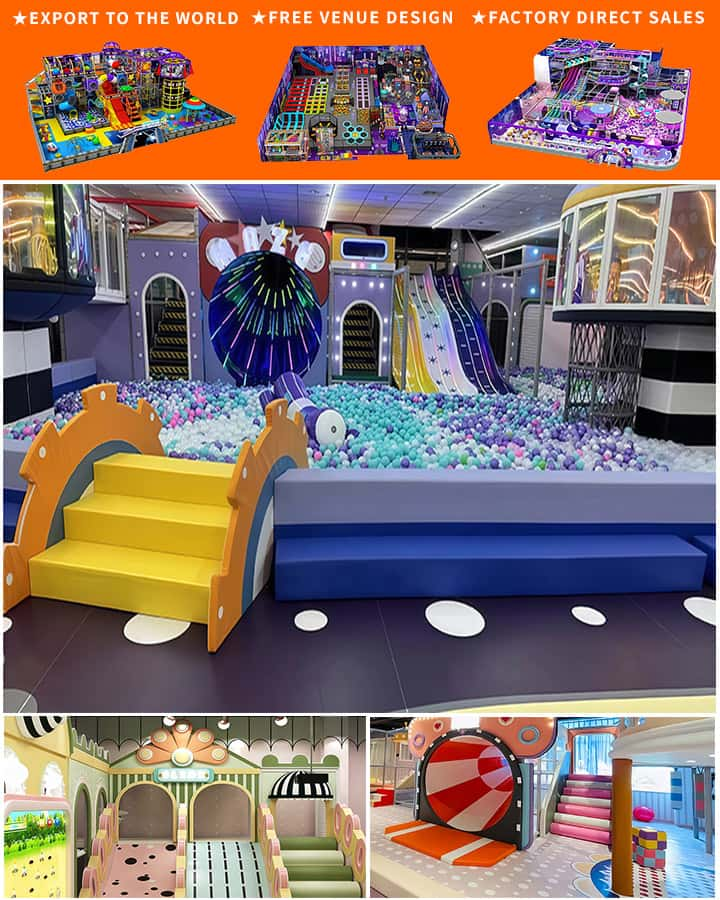In today’s fast-paced world, finding activities that keep kids engaged and entertained can be challenging. An indoor playground offers a fantastic solution, providing a safe and stimulating environment for children to explore, learn, and most importantly, have fun. Whether you are planning to set up an indoor playground at home or considering investing in a commercial facility, here’s how to create the ultimate indoor playground for kids.
Choosing the Right Location
The first step in creating an indoor playground is choosing the right location. For home setups, consider converting a basement, garage, or even a spare room into a play area. Ensure the space is easily accessible but separate from quieter areas of the house to minimize noise disturbance. For commercial ventures, look for spaces with high ceilings to accommodate tall structures like slides and climbing frames. Additionally, prioritize safety by selecting a location with good ventilation, easy access to restrooms, and non-slip flooring.
Essential Play Equipment
No indoor playground is complete without a variety of engaging play equipment. Here are some must-haves:
Climbing Walls and Ropes: These structures encourage physical activity and help develop motor skills and confidence as kids challenge themselves to reach new heights.
Slides: From spiral slides to straight drops, slides add excitement and variety. They are excellent for developing balance and coordination.
Trampolines: A small trampoline can provide endless bounce-filled fun while improving cardiovascular fitness. Safety nets are a must to prevent falls.

Ball Pools: Filled with colorful plastic balls, ball pits offer a sensory-rich experience and are perfect for imaginative play.
Obstacle Courses: Set up tunnels, balance beams, and crawl spaces to create an engaging obstacle course that promotes physical activity and problem-solving skills.
Safety First
Safety should always be a top priority. Invest in soft, shock-absorbent flooring to cushion falls. Regularly inspect all equipment for wear and tear, and ensure the area is free of sharp edges and small parts that could pose choking hazards. Supervise children closely, especially in areas with higher risks of injury.
Adding Educational Elements
An indoor playground doesn’t have to be all about physical play; it can also be a hub for learning and creativity. Consider incorporating elements such as:
- Interactive Toys: Building blocks, puzzles, and educational games can stimulate cognitive development.
- Quiet Zones: Create cozy reading nooks with bean bags and books to encourage literacy.
- Art Stations: Provide tables with art supplies for drawing, painting, and crafting sessions.
Themed Playgrounds
Themes can make an indoor playground more exciting and immersive. Popular themes include:
- Space Adventure: Incorporate rocket ships, stars, and planets into the decor.
- Jungle Safari: Use animal prints, vines, and jungle sounds to create a wild atmosphere.
- Underwater World: Decorate with blue hues, sea creatures, and bubble machines.
Final Touches
Don’t forget the finishing touches that will enhance the overall experience:
- Lighting: Bright, colorful lights can create a vibrant and inviting atmosphere. Consider using LED strips for safety and ambiance.
- Music: Soft background music can set the mood and make the playground feel more lively.
- Decor: Balloons, streamers, and wall decals can add a festive touch.
Conclusion
An indoor playground for kids is not just a place to burn off energy; it’s a realm of imagination, learning, and joy. By carefully planning your space and selecting the right mix of play equipment, safety measures, and educational elements, you can create a haven where children thrive and cherish their playtime moments. So, roll up your sleeves, get creative, and watch as your indoor playground becomes the go-to destination for unforgettable fun!




